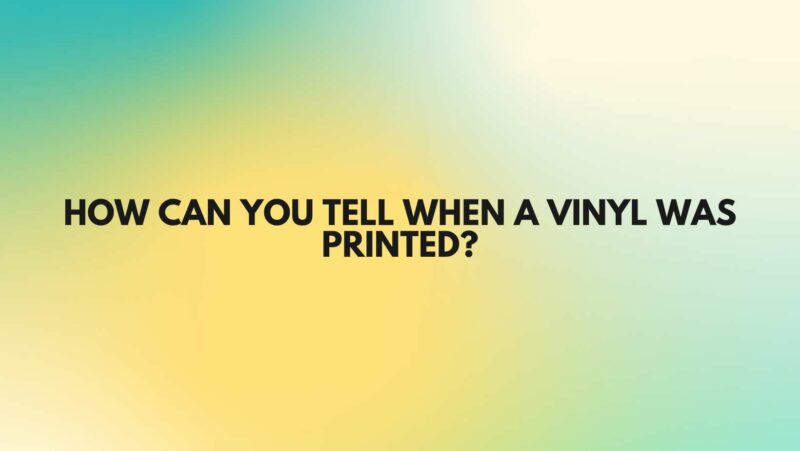Vinyl records are not just musical artifacts but also time capsules that tell the story of when they were created and released. Whether you’re a collector, audiophile, or music enthusiast, knowing when a vinyl record was printed can enhance your appreciation for the music and provide valuable historical context. In this comprehensive guide, we will explore various methods and clues to help you accurately determine the printing date of a vinyl record.
- Examine the Label Information
The label on a vinyl record can often provide crucial information about its printing date. Here’s what to look for:
- Release Date: Some vinyl labels include the album’s release date. This information is typically found near the copyright notice, usually on the record’s label or sleeve.
- Catalog Number: The catalog number, typically located on the label, can be cross-referenced with record label catalogs or online databases to find the release date associated with that specific catalog number.
- Analyze the Label Design
Record labels frequently update their designs over time. Studying the label’s design, color scheme, and typography can help you identify the approximate era of the printing. Labels often changed their design aesthetics in response to changing cultural and design trends.
- Inspect the Runout Groove Etchings
The runout groove, located on the inner part of the vinyl record, often contains etchings or matrix numbers. These markings can provide clues about when the record was printed, mastered, or pressed. Look for matrix numbers that reference specific years or initials of mastering engineers known for working during particular time periods.
- Check for Reissues and Reprints
Vinyl records are often reissued or reprinted after their initial release. These reissues may have differences in the label design, cover art, or other markings. Be sure to research whether the record you have is an original pressing or a subsequent reissue.
- Examine the Cover Artwork
Changes in cover artwork can also help date a vinyl record. Check for variations in color, layout, typography, or any additional text or stickers that may indicate a reissue. Vintage album covers often carry copyright dates, which can provide a clue about when the printing took place.
- Refer to Collector Guides and Discographies
Collector guides and discographies specific to vinyl records can be invaluable resources for pinpointing printing dates. These references provide detailed information about each release, including release years, label variations, and reissues. Consult online databases, books, or collector communities for such resources.
- Consider the Record’s Condition
While not foolproof, the condition of a vinyl record can offer hints about its age. Records that have seen extensive use and wear are more likely to be older pressings, as they have been played over the years. Pristine, unplayed copies may be later reissues or well-preserved original pressings.
- Research the Artist’s Discography
If you have access to information about the artist’s discography, you can narrow down the printing date by researching the release date of the album. This method is particularly useful when the album in question is part of a known sequence of releases by the artist.
Conclusion
Determining when a vinyl record was printed requires a combination of detective work, research, and attention to detail. By using the methods and clues outlined in this comprehensive guide, you can unlock the secrets of your vinyl collection and gain a deeper understanding of the historical and musical context surrounding each record. Whether you’re preserving vinyl history or simply enjoying the music, the process of discovering when a vinyl was printed can be a rewarding journey for any enthusiast. Happy exploring!


